
‘For over four decades Bill Brand has been an artist, educator, activist and film preservationist. His experimental and documentary films, videos and installations have exhibited extensively in the US and abroad in museums, microcinemas, and on television since the early 1970’s. They have been featured at major film festivals including the Berlin Film Festival and New Directors/ New Films Festival and are written about in cinema history books and in articles by Erik Barnouw, David James, Janet Maslin, Paul Arthur, J. Hoberman, B. Ruby Rich, and Noel Carroll, among others.
‘All of Brand’s films explore landscape and the body to express a broad variety of themes including industrial production, medicine, travel and family history. Quiet explorations of exterior spaces that unveil more than is apparent.
‘His famous 1980 public artwork, Masstransiscope, a mural in a NYC subway tunnel that is animated by the movement of passing trains, is in the permanent collection of the MTA Arts for Transit program. In 1973 he founded Chicago Filmmakers, the showcase and workshop and served on the Board of Directors of the Collective for Living Cinema in New York City. He is currently a trustee of the Flaherty Seminar and an advisor to the Orphan Film Symposium. Since 1976 he has operated BB Optics, an optical printing service specializing in archival preservation of small gauge films and films by artists.
‘In 2006 Brand was named an Anthology Film Archives film preservation honoree and given a month long retrospective to celebrate BB Optics’ 30th anniversary. He is currently Professor of Film and Photography at Hampshire College and since 2005 has also taught film preservation in the graduate Moving Image Archiving and Preservation program at New York University.’ — Cinema Without Borders
____
Stills




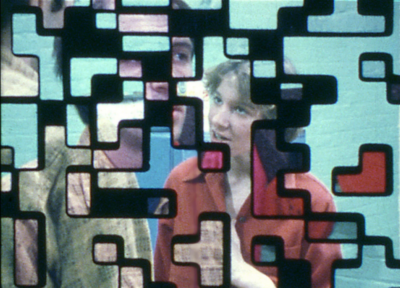

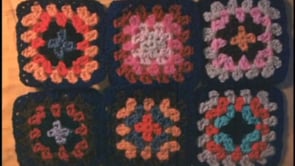
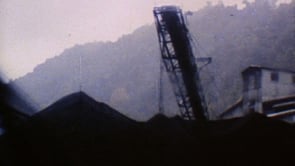





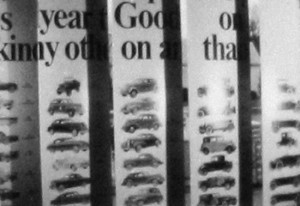

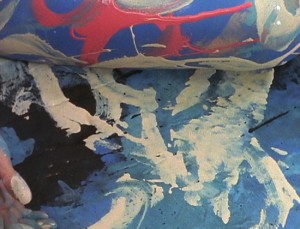
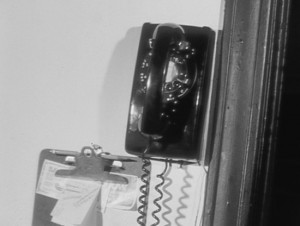
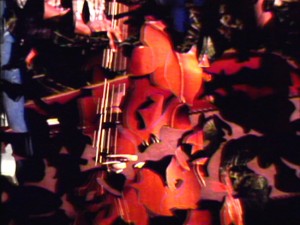

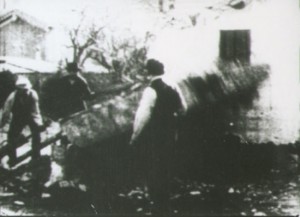


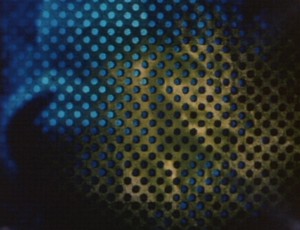











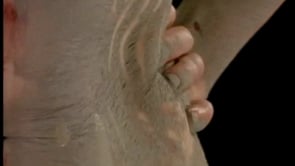
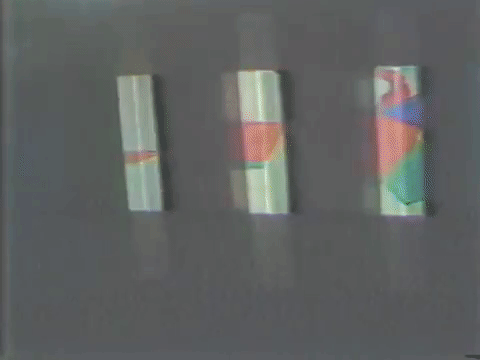

_____
Further
Bill Brand Website
BB Optics
Bill Brand @ IMDb
Bill Brand @ The Film-Makers Cooperative
Bill Brand @ Lightcone
Bill Brand @ Galerie Arnaud Lefebvre
CONNECTIVITY THROUGH CINEMA WITH BILL BRAND
Results You Can’t Refuse: Celebrating 30 Years of BB Optics
Experimental Filmmaking: Break the Machine
Making “Masstransiscope”
Now Available on DVD: The Films of Bill Brand!
_______
Masstransiscope
Bill Brand’s 1980 public artwork restored in 2008 can be seen on the Q and B trains from DeKalb Ave. in Brooklyn going into Manhattan toward Canal or Grand St. Look out the window on the right.
_____
Extras
The Artist Behind the Artist: Film Preservationist Bill Brand
Bill Brand, Preservationist, BBOptics
_____
Interview
from Desist Film
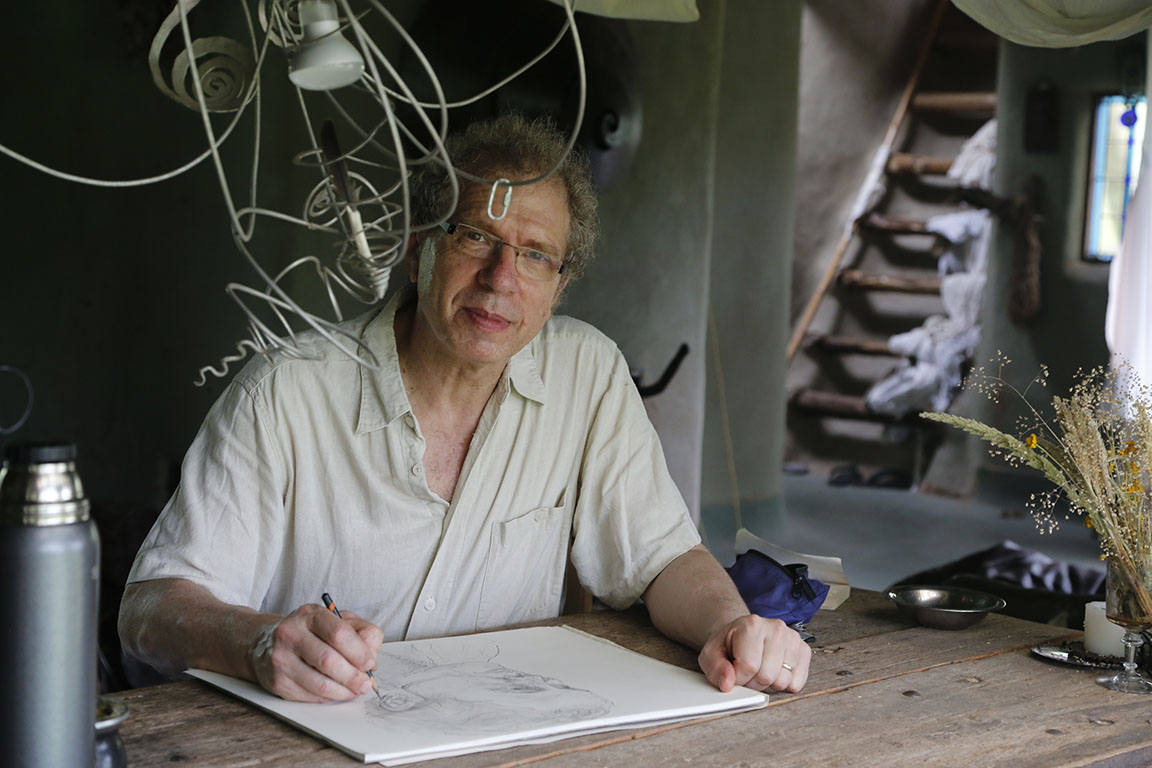
Desistfilm: This “permutation” of the image, or your technique of inserting images in the interstices of the filmic space (kinetic fields, as you call them, where two images coexist in the same environment): how does it serve a particular purpose, for example, in two films as different as “Huevos a la Mexicana”, “Coalfields” or “Tracy’s family folk festival”?
Bill Brand: There are several threads to this technique. In the early 1970’s I made films that derived from the material and mechanisms of film. I was a student of Paul Sharits and collaborated with him to create his first installation (Locational) work, Sound Strip / Film Strip (1972). My films Moment (1972) and Demolition of a Wall (1973) explored time and motion where the frame is the limiting dimension. Both films play with the directionality of the moving image in time and space, complicating notions of forward, backward, left and right. Demolition of a Wall presents all 720 permutations of six frames from the Lumiere film of the same title. In this period of my work I started thinking about grain as a limiting factor of the image. I was inspired watching Robert Huot’s 1968 film Spray where he painted clear leader with spray paint to produce a swarm of grain-like patterns on the screen. I thought, “what if each grain, instead of being a just a unit of an image, could be a frame for the image as well. My first film exploring this idea was Zip-Tone-Cat-Tune (1972). Here the “grain/frame” is a grid of dots from an animated ben-day pattern and the photographic image is of a cat in positive and negative. I built a proto-optical printer to composite the films. I added freeze frames and colorized the b&w footage with filters so that the space, time and motion between the positive and negative images are in tension, structured (I imagined) like harmonic rhythm in baroque music. But the dots don’t swirl randomly like grains or the paint drops in Huot’s film, so after making Zip-Tone-Cat-Tune I looked for ways to accomplish this.
Of course, I had many ideas that motivated this search. It wasn’t just a visual technique. For instance, with Zip-Tone-Cat-Tune I was trying to create composition in time analogous to music. With later films I was trying to create other kinds of layered counterpoint. But throughout, I was making images about thresholds, boundaries of perception and apprehension. With each film, the particular purpose, as you’ve asked, shifted or accumulated new dimensions. So, with Works in the Field, I was taking apart the foundations of Renaissance perspective and exploring its relationship to conventional cinematic language – looking for what gives the picture its authority as document (truth) and what is it about the photographic-cinematic composition that carries an ephemeral emotional truth. Or at least, that’s what I thought I was doing. All this, I believed, had a political dimension. I wasn’t the only one during that period who thought my work was a critique of how cinema functions as social control. I don’t think my ideas were particularly original or even very coherent. But the visual ideas were more so and perhaps this is what drove me to continue working in this direction. So with each film, I pushed the visual ideas and they served different purposes with each step. Split Decision takes apart narrative and conventional story telling tropes. Chuck’s Will’s Widow is more about personal expression and lyricism. Tracy’s Family Folk Festival and Coalfields puts documentary and explicit social-political content through the matrix of my visual ideas.
I thought I had come to the end of these visual ideas with Coalfields, but they returned in video in Suite and more recently in digital works including Huevos a la Mexicana where I apply ideas from all these past works in ways that are less conscious and more playful. But I am aware that it all has something to do with mark making and gesture, especially in relation to the drawing and painting that has become a more prominent feature of my studio work.
Desistfilm: “Susie’s Ghost” is a melancholic journey, the phantasmagoria reflected in the absence, in the impossibility of seeing something which is supposed to happen or appear in screen. It’s both a human and a territorial tale. What drove you to make such a particular film like this?
Bill Brand: My previous two films Skinside Out and Swan’s Island were collaborations with my wife, Katy Martin, a mixed media and performance artist who paints on her own body and produces inkjet prints and films of her actions. I had been shooting photographs under her direction for this work until she started using a digital camera and could shoot herself. During the same period I was making Suite, a series of five videos where I used my own body as a way to deal with family history and genetic disease and where sometimes Katy filmed me under my direction. After completing Suite Katy and I made Skinside Out and Swan’s Island together to see what would happen if we deliberately collaborated as co-directors.
After completing these two films with Katy I wanted to keep exploring performance and landscape independent from Katy’s work so I began sketching ideas with former student Ruthie Marantz. Ruthie had grown up in my neighborhood. Her mother was my daughter’s elementary school principal during the same period I was Ruthie’s college professor. So we shared a connection to the place although from the perspective of two different generations. Tribeca and Soho, which had gone from an abandoned manufacturing district to an enclave of struggling artists, was now in its last stages of disappearing into a fully gentrified neighborhood for the ultra wealthy. Ruthie and I each, for our own reasons, were experiencing feelings of loss in relation to the place. Without even talking about it, this became evident in the improvisational video sketches we made. Eventually I asked her to improvise performances in the neighborhood landscape while I shot out-of-date 16mm film I had accumulated in my refrigerator. I was beginning to shoot HD digital but didn’t yet feel I understood the images it created. So in shooting up my remaining film-stock I was paying a melancholic tribute to a passing medium in the passing landscape during a time of other personal loss including the passing of my oldest sister Susan. Ruthie was dealing with her own passages and these entered the film through the fluid characters she created for the camera.
This was also the period when I started making drawings of my family who were now growing up and leaving home. Here my sense of loss found expression with direct marks by hand on paper. Many of my films are landscapes where the gesture of hand and eye through the camera carry an ephemeral emotion. With Susie’s Ghost I tried to include a figure in the picture where my framing of the landscape foregrounds as the primary carrier of emotion instead of merely receding as background for the figurative character. This ambition was harmonious with the themes of loss and passage feeding into the work and contributes to what you are calling its phantasmagoric absence. MoMA curator Josh Siegel called the film runic. By foregrounding the gestural framing of the camera and the graphic qualities of the landscape, the figure slips into an unstable netherworld, neither here nor gone.
When I make a film or any other artwork, I don’t have something I’m trying to say. Instead it’s through making the work that I discover what the work says. Its an unconscious process that involves deliberate actions but rarely deliberate meanings.
Desistfilm: You’ve tried both working the image in computer generated fields, digitally, and by hand, to recreate techniques, I’d dare to say, that look to serve a similar purpose. How are this methods different from each other in the sense of how do you use them in your images?
Bill Brand: I first used computers in the early 1970s to generate analog film materials and more recently used digital tools to return to some of the visual ideas I invented with analog film. The main difference for me working mostly with digital tools is the absence of the physical materials and the generative resistance they provide. I think a viewer feels the physical dimension of a film even if projected digitally and it certainly plays a role in my creative process. With recent works such as Huevos a la Mexicana I used ink on paper and physical objects to generate mattes for compositing with the hope that it would bring into the work some of this physical dimension. I’ve still got more to do in this direction before I’m satisfied.
_____________
15 of Bill Brand’s 28 films
_____________
Always Open Never Closed (1971)
‘A woman wakes up, gets dressed, makes breakfast and walks down the street. This daily ritual becomes extraordinary seen in a trance-like structure of continuous lap dissolves and continuous spectral color shifts.’ — BB
______________
Zip-Tone-Cat-Tune (1972)
‘A simple home movie of a cat is reprocessed through a ‘Zip-a-tone’ dot pattern making a complex of layers. In combination with freeze frames, positive and negative, and color motion, this work attempts to visually construct a system of overlays like those in Baroque musical composition.” — Filmmakers Coop
_______________
Acts of Light (1974)
‘ACTS OF LIGHT is a trilogy consisting of RATE OF CHANGE, ANGULAR MOMENTUM, and CIRCLES OF CONFUSION. Together they develop a study of pure color based on the notion that film is essentially change and not motion. The films build one on the other as first pure change, then relational change, and finally, irrational change. They can be seen together or as separate works.’ — BB
______________
Touch Tone Phone Film (1973)
‘The phone rings and a woman gets up to answer it. This event is recorded on film but we only see it as a sliding strip. Each time the action repeats, the film strip slides past and stops at a frame closer to her picking up the phone. The film’s form mimics the hiatus of machine-human interface…(it) impresses primarily as a wittily anecdotal metaphor.’ –- Ian Christie
____________
Demolition of a Wall (1973)
‘DEMOLITION OF A WALL takes six frames of the falling wall from the 1896 Lumiere film and shows reorders these six frames in all their permutations. With a score for piano that follows a similar pattern the film resembles change ringing, a musical form developed in England in the 17th century where the tuned bells of a church tower are rung in a series of mathematical patterns called “changes”. In the original Lumiere film, we see Lumiere himself directing workers demolish the wall while a mysterious man in the background watches. In its first commercial screening, Lumiere showed the film forward and backward. Here, we see 718 additional variations on the theme.’ — BB
______________
Before the Fact (from Cartoons) (1974)
‘Made at S.U.N.Y. at Binghamton as a class exercise, filmmaker Saul Levine performs with students who each try to mimic his previously recorded phrase and then try to imitate each other imitating the recording. Cartoons is series of short playful films that pose riddles or jokes about Structural Film concepts in avant-garde film.’ — BB
______________
Works in the Field (1978)
‘Mountain landscapes, Manhattan cityscapes and images from magazine covers and television news are fragmented through optical printing with computer generated mattes. Intercut with a found documentary about family life in Malaysia, the film becomes an essay on reading. Watching the film is like an accelerated game of Concentration with glimpses of the image appearing inside swirling grids. The juxtaposition of the gridded sequences to the conventionally assembled Malaysian footage formulates an inquiry into the nature and meaning of the “document” in cinema.’ — BB
_______________
Split Decision (1979)
‘The fact that the film embraces narrative shows how far Brand has come since emerging in the early ‘70’s as a virtuoso of American structural cinema. ‘Split Decision’ may go down in history as the first-ever topological melodrama, combining a witty scenario on conversational ambivalence with a frenzy of visual ambivalence, produced by fragmentation of the image into a kind of spatio-temporal mosaic.’ — Time Out, London
______________
Tracy’s Family Folk Festival (1983)
‘This is an impressionistic portrayal of the 1982 folk festival at Tracy and Eloise Schwarz’s farm in Central Pennsylvania. The festival, dedicated that year to the legendary Elizabeth Cotton, includes Bluegrass, Old Timey, Cajun, Country, and Gospel music. In contrast to the easygoing atmosphere of the festival, the film is a frenetic swirl of elaborately collaged shapes derived from traditional Pennsylvania Dutch designs. While sometimes the music seems to animate the image, at others the image itself becomes visual music on its own, eliciting ephemeral and sometimes forlorn emotions. The film offers an unusual meeting of a folk tradition and the avant garde, implying a fundamental connection between the two.’ — BB
________________
Home Less Home (1990)
‘Bill Brand’s remarkable documentary probes the lifestyles of the homeless population of our city and reveals perhaps the most frightening news of all. Many of those we see outside in cardboard boxes or sleeping bags are not drunks, addicts or lazy, but workers who simply don’t earn enough to rent a room in New York.’ — The Film Society of Lincoln Center
‘The testimony of many homeless people would have been a sufficiently urgent basis for any documentary film on this subject. But Mr. Brand goes further, offering a disquisition on the connection between the condition of the homeless and the consequences of studying it as a series of images’ — Janet Maslin, The New York Times
_______________
Double Nephrectomy (from Suite) (1998)
‘This double portrait cinematically projects my sister’s wound onto my own body and psyche. Shortly after she received a living donor kidney from a friend, I filmed the scar that resulted from removing both her damaged organs. This video projects that image of her two-week-old scar onto my own body, visualizing my complex feelings of knowing I have been spared the gene that caused her disease. In the video, I find, on my own body, the scars I imagine we share.’ — BB
______________
I’m a Pilot Like You (1999)
‘I’M A PILOT LIKE YOU was shot July, 1999 inside and outside 20 North Moore Street where John and Carolyn Kennedy lived. Ruth Hardinger, a sculptor, is a 1st floor resident in this building and was unwittingly trapped by the media frenzy and the public attention that unfolded on the sidewalk in front of the building after the Kennedy plane crashed off Martha’s Vineyard. Bill Brand, a nearby neighbor and experimental filmmaker, collaborated to make a video that gives a unique view from inside the building, looking back at the spectacle created by the public and the media. It shows what it felt like to be on the other side of the story.
‘Ruth’s front steps may be the most photographed 50 feet in TriBeCa’s history and “I’m a Pilot like You” provides an intimate and critical view of what it was like to live through this period of uninvited attention. The film captures the moments in which this neighborhood, prized by the Kennedy’s for its sense of anonymity, became as a result of their unhappy deaths, a place of international celebrity.’ — BB
______________
Skinside Out (2002)
‘SKINSIDE OUT features paint on skin, carried out in an expressionist mode on both of the filmmakers’ bodies. The emphasis is on the pleasure of looking — at the edge of repulsion — and the implications of making public an essentially private gesture. The film posits painting as a gendered, bodily act, whose location shifts continually within a context that’s always changing. Images filmed in the studio are juxtaposed with footage of a construction barge along the Hudson. By examining both in relation to surface, the work paradoxically looks for what lies within, while questioning who and where we take ourselves to be.’ — BB
_______________
Swan’s Island (2005)
‘SWAN’S ISLAND focuses on gesture in painting, and how that relates to the hand-held camera. The emphasis is on the physicality of painting, and its visceral connection to memory and imagination. Here, the movement of the artist’s hand is expanded to include the entire body. The film is about gesture as a kind of performance. Katy paints directly on her skin, and as she moves, leaves marks on the floor. Bill films the body and its trace, linking his own movement with cinematic space.’ — Filmmakers Coop
_______________
Susie’s Ghost (2011)
‘SUSIE’S GHOST is about the mystery of the marks we make and leave behind. The “Susie” in the title refers to a sibling but the “ghost” refers more generally to lingering feelings of loss. The cinematography and performance both express a tentative presence and diffuse sense of disappearance. Is she looking for something? Is she really there? We shot with aging 16mm film in my downtown Manhattan neighborhood, just before construction mania obliterated the last traces of the manufacturing district I’d moved into years earlier.’ — BB
*
p.s. Hey. ** Steve Erickson, Thanks. I did (have fun at Disneyland). Everyone, Mr. Erickson has reviewed Benjamin Naishtat’s new film ‘Rojo’ here if you’re hopefully interested. Good that the insurance stuff is working out. I haven’t seen that Mandico short, no, but I’ll go over to MUBI and watch it. I’m interested in what he does, and, at a shorter length, most definitely. Thanks! Pym is a master for absolute sure. One of those writers where, once you get a taste for her prose, it’s lifelong. That’s fantastic news that you’re interviewing J. Hoberman. Wow, you must have a zillion questions you’d like to ask him. And cool that it’s for Filmmaker. I really like that site/mag, and Scott MacCaulay is a big hero of mine. ** David Ehrenstein, Hi. Everyone, Mr. E has added to his FaBlog with something called ‘Graham Greene Goes To Mar-A-Lago’, which certainly is a curious combo idea, so hit it up. I don’t know if you saw, but Steve Erickson asked you if you’re selling things in your big sale by mail. ** Bill, Yes, I did a ‘Bill’ and was suffering notably at ‘WB’s’ excessive, to me, length. I did enjoy Disneyland, thank you, and, speaking of, when I was a kid, Disneyland (LA) had an amazing magic shop, and I used to make my parents take me to the park just so I could shop there. They killed it off in the 1970s, fuck knows why. Pym is fantastic, and her prose is quite addictive. Oh, yes, I’ve had ‘Annabel Lecter’s’ cakes in various posts in the past. She’s up there, really a matter of that sort of thing. And since I’m just starting to scout things for the upcoming Halloween season here at the blog, I am reminded, thanks to you, to troll her new stuff. Thanks, bud. ** _Black_Acrylic, Hi, Ben. That is a pity. I know nothing about this ‘Mr. Benn’ show, but I will rectify that post-haste. Yes, Pym is in that divine area of writers along with the great genius Ivy Compton-Burnett and others, and she’s one of the very, very best at it. ** Lynne Tillman, Lynne! Thank you so much for coming in here! And of course I love that you love Barbara Pym, and, yeah, that makes so much sense. Such an incredible wordsmith! I hope you’re doing really, really well, my pal and hero! Much love! ** Kyler, Hi, Kyler. Yes, I got your message. I’ve been meaning to write back to you. It arrived in the midst of the sudden death of a good friend and collaborator so I was kind out of sorts. I’m so sorry, man. Losing a parent, and both parents, that’s as heavy as it gets. You sound good, and I’m really happy to hear that. Many hugs and lots of love to you. ** Shane Christmass, Ha ha. Hi, Shane. Oh, yeah, I think ‘Gone Tomorrow’ is my favorite of Gary’s novels. Kind of an overlooked one. Congrats on your new novel! That album you linked to is a Harris project? No, I don’t know it. I will go eat it up. And thanks for the link to your story. I’ll find the time to reward myself with that ASAP. You take care too. ** Misanthrope, Hi, G. I did (have fun). The ‘Spiderman’ movies kind of irritate me for some reason. All of them, even though all the rebooting and recasting has changed them. Don’t know why. I’m very impressed that you know a guy who’s not only a magician but who performs at Mandalay Bay, which is a pretty way-up-there gig for a magician. Back when Criss Angel was on Facebook he ‘friended’ me. I always thought that was curious. I didn’t know he was still around doing his stuff. ** Right. I think most people know Bill Brand primarily for his trippy Masstransiscope piece in the NYC subway system, but he’s a very excellent filmmaker. My favorites are the ‘grid’ films — ‘Works in the Field’, ‘Split Decision’, and others — but they’re all very worth watching if you haven’t (or have). Dig in please. See you tomorrow.




 Now available in North America
Now available in North America 
Waving to Lynne Tillman!
Bill Brand is interesting.
As you can tell from the FaBlog entry inked above I’m contemplating a alrge piece about pedophilia which is a crime in the U.S. only if “caught” Cross-culturally its is an obsession involving everything from Shirley Temple to Michael Jackson
Something Yuri should read.
At the same time, there’s an increasing attitude that women only really achieve the age of consent around 30 if they enter a relationship with a man who is more than a few years older than them. (You can see the gay version of this with Stephen Fry and his 27-year-old boyfriend.)The backlash to a culture full of older man/younger woman fantasies, where the reverse are much less often acted out in art and life, and actual pedophilia is perfectly understandable, but I don’t think it helps anyone find their sexual agency to act as though a 23-year-old woman’s relationship with a man in his 40s is adjacent to pedophilia.
I saw HOUSE WARMING, an experimental theater piece co-directed/written/acted by James Stanley (who was part of the NTUSA and the original cast of Young Jean Lee’s STRAIGHT WHITE MEN) and his wife Jesse Hawley in an apartment formerly owned by Rip Torn (James mentioned afterwards that their arrival in NYC the night Torn died cast a pall over it.) It’s performed in a living room, with about 30 spectators treated as guests in a dinner party. (James played bartender to us before it began.) HOUSE WARMING interpolates three scenes from WHO’S AFRAID OF VIRGINIA WOOLF?, and the movie’s soundtrack album is one of several played on a turntable during it. But it’s hard to pin down exactly what the piece is trying to do: it also incorporates dance and several songs, ranging from punk to folk. Jesse went through the audience, asking questions like “Can you ever really know someone else?” and “Do people always flatter themselves?” I have the feeling this was expressing something private about their marriage, which I can guess about but have little access to. (It closed with them performing a song with their daughter on violin.)
Hi, Dennis.
Have to say, I’ve not heard of Bill Brand but he seems super interesting and just the sort of artist I should be deep diving into. Thanks for the tip as always.
As to what we were saying a few days ago there, yeah, not going up and saying hi when you were right there now seems completely weird. But shyness is weird, right? Irrational.
But anyway, not an enormous amount to update you on. Single again and back to floating around from flat to flat, unsure what to do with myself. But have been listening/watching/reading lots of stuff, or as much as I can.
Am going to see Yves Tumor tonight, on a bill with Evian Christ, so very excited about that. Yves has been very important to me during this period and obviously you’re a big fan too.
I also have tickets to see Helm next month (new album is wonderful) and forthcoming gigs from Xiu Xiu and Sunn 0))), two old faves also killing it with new albums.
You said things were weird for you just now, i heard you lost two people close to you recently. I am deeply sad to hear that. Hopefully a dose of Disneyland magic will help lift the dark cloud.
Anyway, I’m away to dip into some Bill Brand.
Speak soon.
I’m very happy to report that as of this evening Issue #2 of The Call zine is now online!